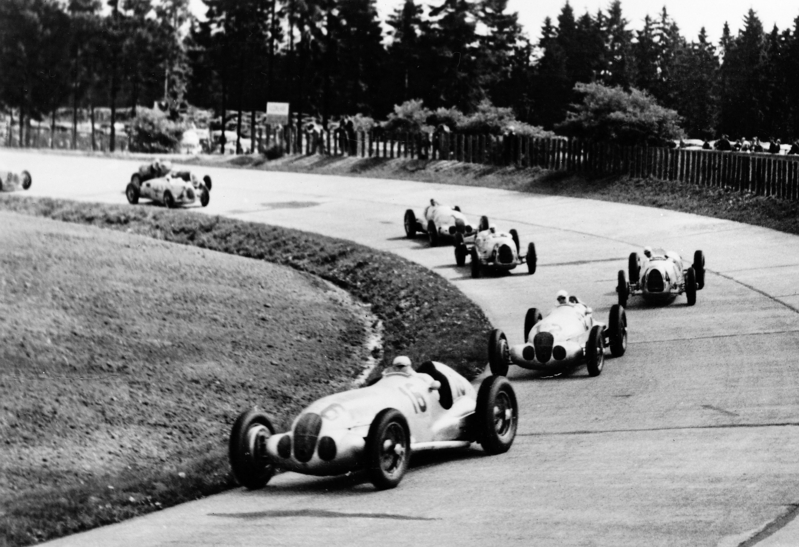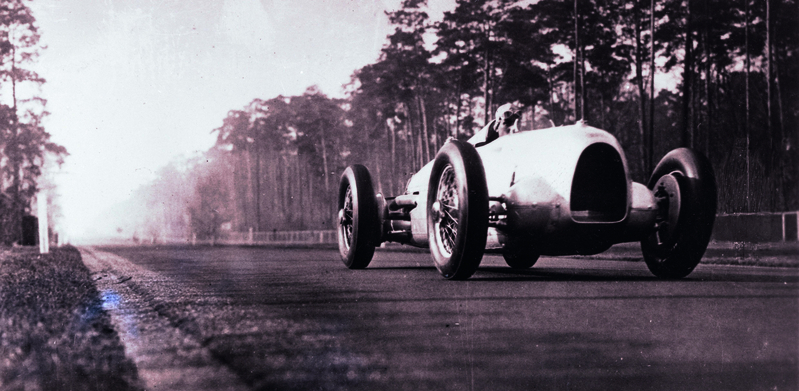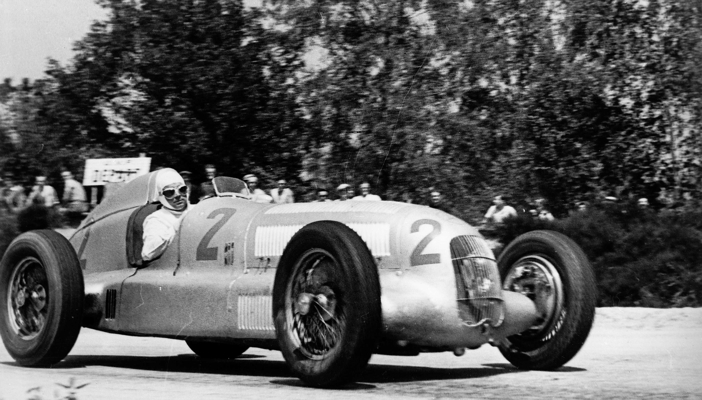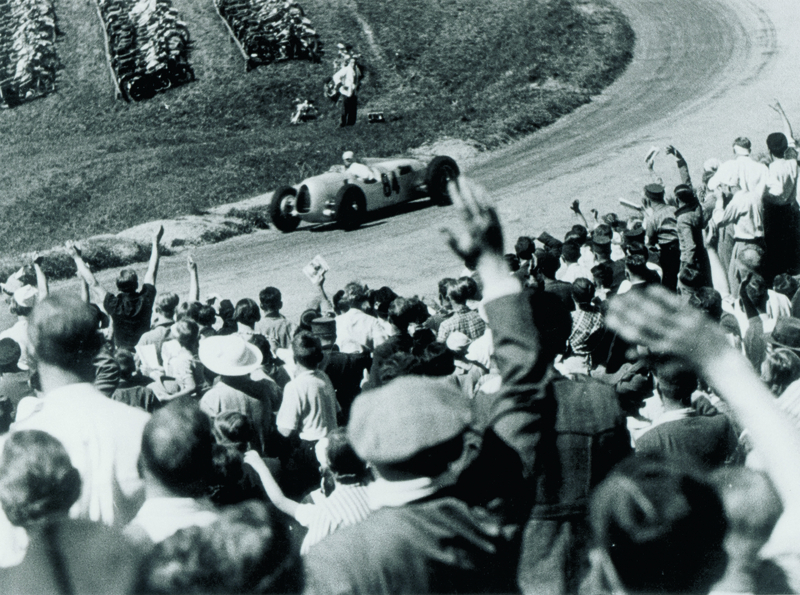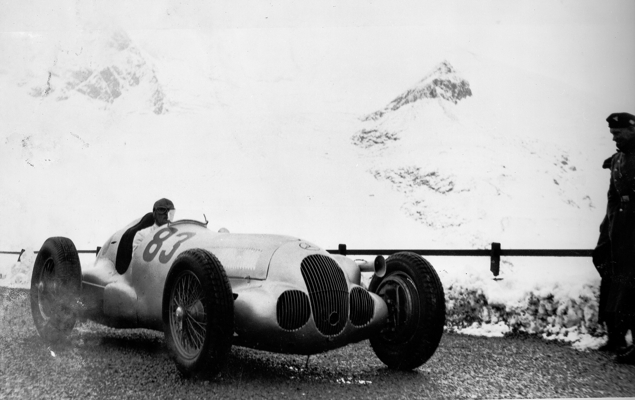|
Send this page to a friend! Fill in the form bellow | ||
news
Mercedes and Audi Pre-War Grand Prix Cars Racing at Goodwood Revival
There will be a once in a lifetime race at the Goodwood Revival from September 14-16. Mercedes Mercedes-BenzGermany, 1924 > present197 models
Mercedes-BenzGermany, 1924 > present197 models
9852 photos
33 videos
has taken a collection of pre-war grand prix race cars from 1934 to 1939 out of its collection and prepped them for race; Audi AudiGermany, 1909 > present83 models
AudiGermany, 1909 > present83 models
8213 photos
27 videos
has done the same thing with two of its Auto Union Auto-UnionGermany, 1932 > 19647 models
Auto-UnionGermany, 1932 > 19647 models
11 photos
grand prix cars from the same era. A collection of these cars will take part in a race at the Goodwood Revival.
Audi will bring the Typ C Auto-Union Type CGermany, 1936 > present2 photos
Auto-Union Type CGermany, 1936 > present2 photos
and Typ D Auto-Union Type DGermany, 1938 > 19395 photos
Auto-Union Type DGermany, 1938 > 19395 photos
. There is only one Typ C still in existence and just three Typ Ds. The Typ C used a 6.0 liter V16 engine with one or two superchargers depending on the version and produced between 485ps and 520ps. The Typ D also used a 3.0 liter V16 but with a 60° V instead of 45° from the Typ C. It also used two superchargers for total power of 485ps.
Mercedes will have the W25 Mercedes-Benz W25 Motorty...Germany, 1934 > 19342 photos
Mercedes-Benz W25 Motorty...Germany, 1934 > 19342 photos
, W125 Mercedes-Benz W125 Motort...Germany, 1937 > 19371 photo
Mercedes-Benz W125 Motort...Germany, 1937 > 19371 photo
, W154 Mercedes-Benz W154 Motort...Germany, 1938 > 19382 photos
Mercedes-Benz W154 Motort...Germany, 1938 > 19382 photos
and W165 Mercedes-Benz W165 Motort...Germany, 1939 > 19392 photos
Mercedes-Benz W165 Motort...Germany, 1939 > 19392 photos
race cars. These are the cars referred to as the Silver Arrows.
In addition to the Auto Unions and Mercedes, the less successful cars that they raced against from MG MGUnited Kingdom, 1924 > present37 models
MGUnited Kingdom, 1924 > present37 models
162 photos
, ERA ERAUnited Kingdom, 1933 > 195311 models
ERAUnited Kingdom, 1933 > 195311 models
5 photos
, Maserati MaseratiItaly, 1914 > present62 models
MaseratiItaly, 1914 > present62 models
696 photos
7 videos
, Riley RileyUnited Kingdom, 1923 > 192318 models
RileyUnited Kingdom, 1923 > 192318 models
9 photos
and Bugatti BugattiFrance, 1909 > present41 models
BugattiFrance, 1909 > present41 models
976 photos
7 videos
will also be on track. It will be possibly the only opportunity in the next decade to see all of these cars actually racing like they would have been in the 30s.
The spectacle of this race does not end there. A recreation of the paddock from the Bremgarten track in Switzerland will be built, and the cars will use period transporters.
Goodwood says it will reveal more details about the race soon. This data will probably include who the drivers of the cars will be and when the race will be.
Tickets for the Goodwood Revival are available now. They cost £117.00 for adults for the entire weekend or £58.50 for people under 22 for the weekend. Day passes are £56.00 a day for adults and £28.00 for those under 22. Children under 12 are free.
The Silver Arrows 1934-1955
On May 27, 1934 the German racing cars that soon became known as the “Silver Arrows” entered their first race on the Avus racetrack in Berlin. Neither Auto Union, nor Mercedes-Benz won this race, but they began to dominate international Grand Prix racing until the outbreak of the WWII in 1939. While Auto Union merged into the Audi brand, Mercedes made another memorable comeback to the racetrack in the 1950s.Auto-Union Type A, 1934
The Type A 16-cylinder car that started at the Avus race in Berlin in 1934 was the first Auto Union Silver Arrow. The mid-engined racing car was designed by Ferdinand Porsche. With Hans Stuck at the steering wheel, it celebrated the first successes for the Auto Union racing department. Winning most races, it became the unofficial European Champion, a title that was only acknowledged by the sport authorities in 1935.Mercedes-Benz W 25, 1934
The W 25 made its debut at the International Eifel Race on the Nürburgring in 1934 after it had missed the Avus race in Berlin due to technical problems. The mechanically supercharged 3.4-litre in-line eight-cylinder engine produced 354 bhp. It the 1934 season, the W 25 was victorious at the Eifelrennen, Coppa Acerbo, the Spanish and Italian GP. In 1935, the W25 became European Champion.Auto-Union Type B, 1935
The Type B had its engine capacity increased to deliver 375 bhp for the 1935 season. Achille Varzi won the Tunis Grand Prix and the Coppa Acerbo. Stuck won the Italian Grand Prix and took several hill-climb victories, winning the European Mountain Championship while shooting-star Bernd Rosemeyer won the Czech Grand Prix.Auto-Union Type C, 1936/37
In 1936, the 16-cylinder Auto Union Type C was tuned to deliver 520 bhp. With this power-boost, Bernd Rosemeyer managed to win all the titles there were: European champion, German road racing champion and German hill-climbing championType C Record Car, 1937/38
Based on the Type C, Auto Union developed a streamlined car to attempt speed records. Rosemeyer at the wheel of the Type C, became the first person to break the 400 km/h barrier on a public road. In 1938, he attempted to reach the 456 km/h in the Streamliner record car with a 16-cylinder engine at 545 hp. But the car was carried off track at 440 km/h and Rosmayer crashed fatally.Mercedes-Benz W125, 1937
The new 600 bhp-strong Mercedes Silver Arrow, based on an entirely new design, had its debut in 1937 at the Tripoli Grand Prix and took the victory with Hermann Lang at the wheel. Rudolf Caracciola then drove to three victories in five races and won another European Championship. After three years of using the W 25, Mercedes launched the W 125 - a move that turned the tide in favour of Mercedes.Auto-Union Type D, 1938/39
In 1938 the racing formula was changed and Robert Eberan von Eberhorst lead development of the new D Type. The 3-liter 16-cylinder-power unit made 485hp. Tazio Nuvolari won the 1938 Grand Prix races in Monza and Donington in this car and Hans Stuck became hillclimb champion. In 1939, the D Type won the Yugoslavia Grand Prix in Belgrade and the French Grand Prix.Mercedes-Benz W154, 1939
In 1938, the W 154 was the new Gran Prix car from Mercedes. The V12 engine achieved an output of 468 hp and the W 154 gave the team its greatest number of victories of the era. Mercedes-Benz won almost all major competitions that season and in 1939, the last season before the outbreak of WWII, the drivers Brauchitsch, Caracciola, and Lang were able to continue the winning spree.Mercedes-Benz W165, 1939
The W 165 was developed by Mercedes-Benz in less than eight months to accommodate new rules which had been changed at short notice in 1939. The new 1.5-litre M 165 V8 unit produced 254 hp. The design of the frame and suspension was based on the three-litre W 154. In 1939, two W 165 took a double win in Tripoli with Hermann Lang being first, followed by Rudolf Caracciola in second place.Mercedes-Benz W196, 1954
After WWII, only Mercedes returned to the formula races and only very briefly. In 1954, the driver duo of Juan Manuel Fangio and Stirling Moss dominated the season with their W 196s, taking 9 victories in 12 races. Also in 1955, the silver arrows started into a promising season, and as the championship was shortened to 6 races after the Le Mans desaster, Fangio took the title once again with 4 victories.Mercedes 300 SLR, 1955
Derived from the W 196 Gran Prix race car, the 300 SLR became a legend. It competed in the sportscar championship in 1955 and with Stirling Moss at the wheel, won the Mille Miglia; Fangio took the trophy at the Nürburgring. It also raced at the tragic Le Mans race which ended in a fatal accident involving the 300 SLR driven by Pierre Levegh. Levegh and 82 bystanders were killed, leading Mercedes to withdraw from motorsport entirely.
Encyclopedia | Engine Straight 8 Displacement 345 cu in Top Speed -- Transmission -- Maximum power 646 hp @ 5800 rpm Type -- Fuel -- Fuel consumption (combined) -- | price -- annual ownership cost -- |
3 comments
Contribute
more about Mercedes-Benz



latest news





